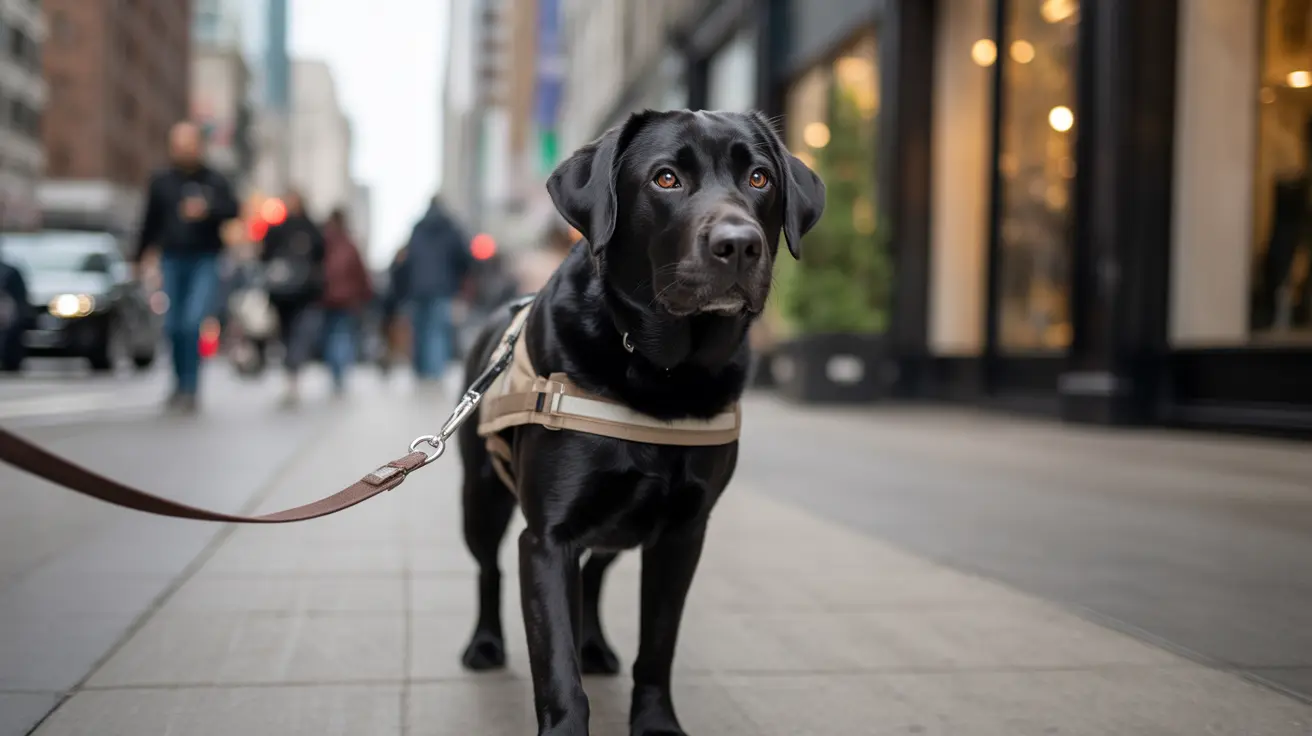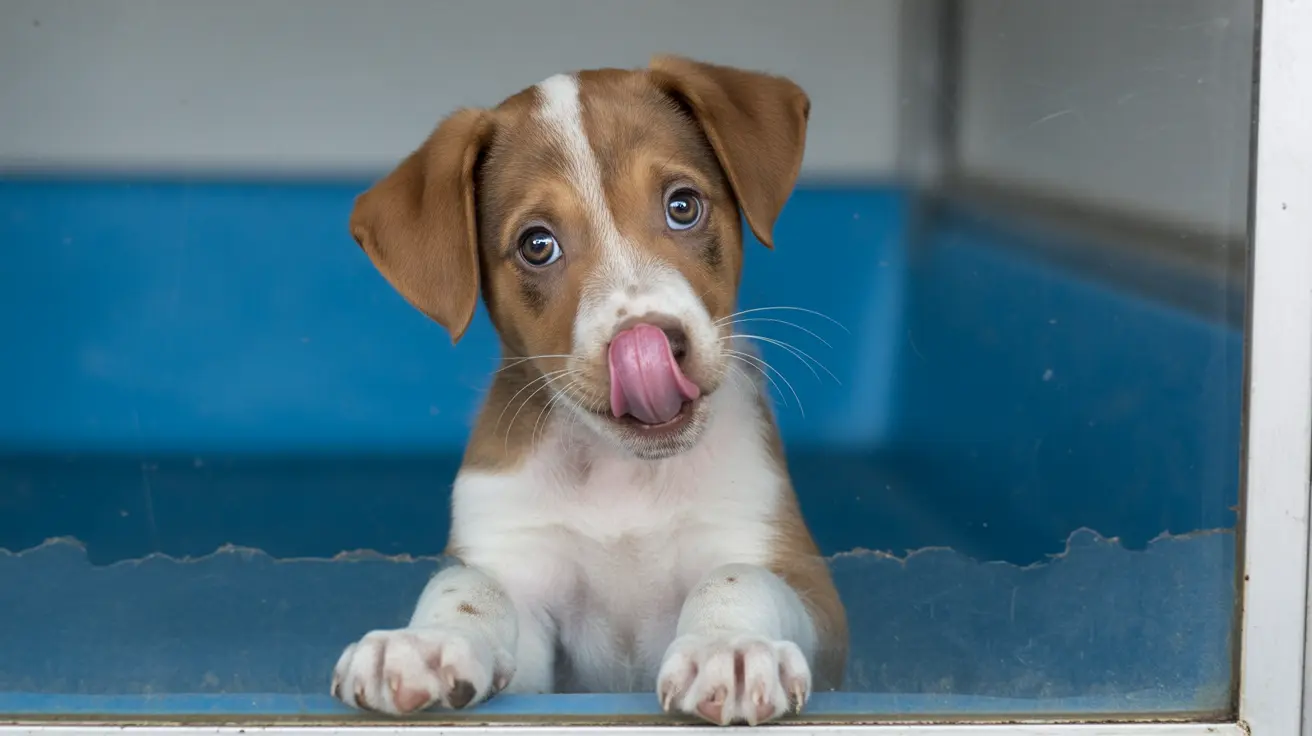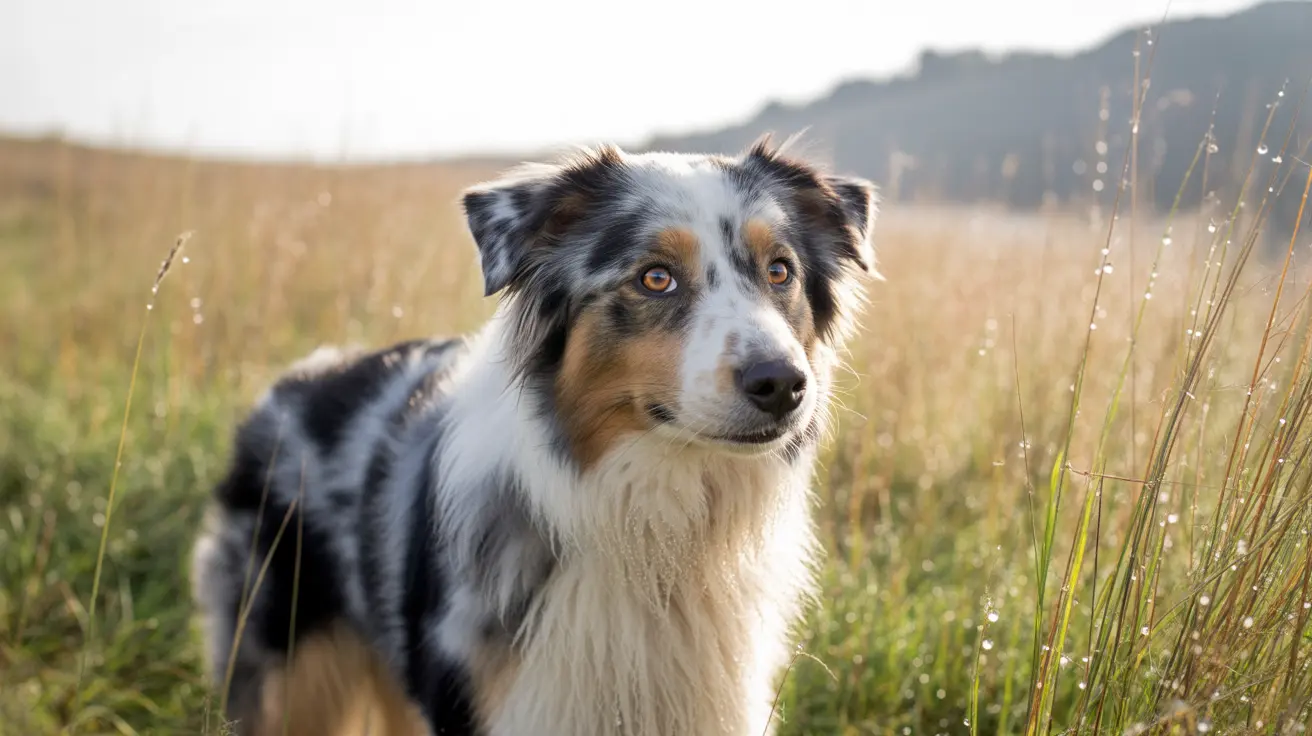How to Protect Your Dog from Heatstroke: Essential Summer Safety Guide
Summer's arrival brings longer days, outdoor adventures, and precious bonding time with our canine companions. However, rising temperatures also pose serious health risks for dogs, with heatstroke being one of the most dangerous and potentially fatal conditions pet owners must vigilantly prevent. Unlike humans, dogs cannot effectively regulate their body temperature through sweating, making them particularly vulnerable to overheating even in moderately warm weather.
Understanding how to protect your dog from heatstroke isn't just about comfort—it's about survival. Dogs can develop life-threatening heat-related illnesses at temperatures as low as 68°F (20°C), and heatstroke can prove fatal within minutes if left untreated. This comprehensive guide will equip you with the knowledge and strategies needed to keep your furry friend safe, cool, and healthy throughout the hottest months of the year.
Understanding How Dogs Regulate Body Temperature
The fundamental difference between human and canine temperature regulation is crucial for every dog owner to understand. While humans rely on sweating through millions of pores across their entire body, dogs have a much more limited cooling system. Dogs lose heat primarily through panting and through the pads of their feet, which contain their only significant concentration of sweat glands.
This biological limitation means that dogs are naturally built to conserve heat rather than dissipate it efficiently. When temperatures rise, dogs must work much harder than humans to maintain a safe internal temperature. Panting allows dogs to evaporate moisture from their tongues and respiratory tract, while the small amount of sweating through their paw pads provides minimal additional cooling relief.
Breed-Specific Heat Sensitivity and Risk Factors
Not all dogs face equal risk when it comes to heat-related illnesses. Certain breeds and individual characteristics significantly increase a dog's vulnerability to heatstroke. Brachycephalic breeds—those with flat faces like Bulldogs, Pugs, and Boston Terriers—face the highest risk due to their compromised breathing ability. Their shortened airways make panting less effective, creating a dangerous situation where their primary cooling mechanism is severely impaired.
Coat color and thickness also play critical roles in heat sensitivity. Dark-coated breeds such as Schipperkes absorb more heat from sunlight and environmental sources, putting them at increased risk of overheating. Conversely, breeds with thin or white coats, including Bull Terriers and Greyhounds, are especially vulnerable to sunburn, which can compound heat-related stress. Additionally, overweight dogs, elderly pets, and those with underlying health conditions require extra vigilance during hot weather.
The Deadly Danger of Hot Cars
One of the most preventable yet common causes of canine heatstroke is being left unattended in vehicles during warm weather. Even with windows slightly cracked and the car parked in shade, interior temperatures can rise to lethal levels within minutes. The greenhouse effect created by glass windows traps heat so efficiently that a car's interior temperature can reach 120°F or higher on a moderately warm day.
This danger persists even during seemingly mild weather conditions. Never leave your dog unattended in a parked vehicle during warm weather, regardless of the duration of your planned absence. The rapid temperature escalation inside cars can cause fatal heatstroke faster than most people realize, making this a zero-tolerance safety rule for responsible pet ownership.
Safe Exercise and Walking Schedules
Timing is everything when it comes to exercising dogs during hot weather. The safest approach is to walk your dog only during the coolest parts of the day—typically before 8 AM or after 8 PM when temperatures have dropped and the sun's intensity is minimal. This schedule not only protects your dog from ambient heat but also helps avoid the scorching pavement that can burn sensitive paw pads.
Before any walk, perform the simple hand test: place your palm against the pavement for seven seconds. If it's too hot for your hand, it's definitely too hot for your dog's paws. Choose shaded routes whenever possible, such as tree-lined streets or forest paths, to provide natural protection from direct sun exposure. During peak summer heat, consider substituting outdoor exercise with indoor activities like puzzle games or training sessions.
Avoiding High-Intensity Activities in Heat
While regular exercise remains important for your dog's health, intense physical activities should be avoided during hot weather. Activities like agility training, scent work, or vigorous play sessions can rapidly increase your dog's core body temperature and risk of heatstroke. These activities are particularly dangerous because dogs often close their mouths while focusing on tasks like sniffing, which severely limits their ability to pant effectively.
Instead of eliminating exercise entirely, modify your approach by reducing intensity, duration, and frequency during hot spells. Focus on mental stimulation activities that can be performed in air-conditioned environments, and save any necessary outdoor training for the early morning or late evening hours when temperatures are more manageable.
Creating a Cool Home Environment
Your home should serve as a safe haven from summer heat. If you have air conditioning, maintain a comfortable temperature and ensure your dog has access to the coolest areas of the house. During power outages or in homes without air conditioning, strategic cooling becomes essential for your dog's safety.
Position battery-operated fans to circulate air throughout your living space, and place frozen water bottles in front of fans to create an evaporation cooling effect. Keep curtains and blinds closed during the hottest parts of the day to minimize heat absorption. Provide multiple water stations both indoors and outdoors, keeping water bowls filled with fresh, cool water and adding ice cubes to maintain lower temperatures throughout the day.
Cooling accessories can provide additional relief for overheated dogs. Cooling mats or crate pads offer comfortable, temperature-reducing surfaces for dogs to rest on. Damp towels placed in shaded areas create instant cooling spots, while cooling vests that utilize evaporation technology can help regulate body temperature during necessary outdoor activities. For dogs comfortable with water, shallow paddling pools placed in shaded areas provide both cooling relief and entertainment.
Hydration and Nutritional Support
Proper hydration becomes even more critical during hot weather, as dogs lose significant amounts of fluid through increased panting. Always ensure your dog has constant access to fresh, cool water, and encourage frequent drinking by refreshing bowls regularly and adding ice cubes to maintain appealing temperatures. During walks or outdoor activities, bring portable water bowls and offer drinks frequently, even if your dog doesn't initially show interest.
For dogs who become dehydrated despite water availability, unflavored pediatric electrolyte solutions can help restore essential minerals lost through excessive panting. However, this should only be used under veterinary guidance. Consider creating homemade frozen treats using ice cube trays filled with water or low-sodium broth to encourage hydration while providing cooling relief.
Recognizing Early Signs of Heat Stress
Early detection of heat stress can prevent progression to life-threatening heatstroke. Subtle signs that many owners overlook include increased restlessness, seeking cool surfaces to lie on, decreased appetite, or mild changes in energy levels. Dogs may also begin panting more heavily than normal during routine activities or show reluctance to continue walks or play sessions.
Watch for changes in your dog's behavior patterns during hot weather. A normally active dog becoming lethargic, or a dog that typically enjoys outdoor time showing hesitation to go outside, may be experiencing early heat stress. These behavioral changes often precede more obvious physical symptoms and provide valuable early warning signs for attentive owners.
Critical Heatstroke Warning Signs
Recognizing the severe symptoms of heatstroke can mean the difference between life and death for your dog. Critical warning signs include excessive panting that sounds rapid and loud, heavy drooling with thick saliva, and a dark or bright red tongue and gums. Dogs experiencing heatstroke may exhibit glassy or unfocused eyes, extreme thirst despite drinking water, and a high rectal temperature of 103°F or higher.
Neurological symptoms indicate advanced heatstroke and require immediate emergency intervention. These include disorientation, uncoordinated movements, balance problems, weakness, frequent vomiting, difficulty breathing, rapid heartbeat, and in severe cases, collapse or unconsciousness. Any combination of these symptoms demands instant action and emergency veterinary care.
Emergency First Aid for Overheated Dogs
If you suspect your dog is experiencing heatstroke, immediate cooling measures can be lifesaving while you arrange emergency veterinary care. First, remove your dog from the heat source and move them to the coolest available location, preferably an air-conditioned space. Provide fresh, cool water for drinking, but never force water into an unconscious or disoriented dog's mouth.
Begin gentle cooling by applying cool, damp towels to your dog's neck, armpits, groin, and paw pads—areas where blood vessels are close to the skin surface. Avoid covering your dog's entire body with wet towels, as this can trap heat and worsen the condition. Instead, focus on these strategic cooling points and replace towels frequently as they warm up. You can also use cool water from a hose or pour cool water gently over your dog, separating the fur to ensure water reaches the skin.
For additional cooling, rubbing alcohol can be dabbed behind the ears, on the stomach, or paws, as it evaporates faster than water and provides more rapid temperature reduction. Use fans or air conditioning to circulate cool air around your dog, and if available, allow access to shallow water for supervised cooling. Monitor your dog's temperature with a dog-safe thermometer, aiming to reduce it gradually to below 102.5°F.
Common Myths About Dogs and Heat
Several dangerous misconceptions about dogs and heat persist among pet owners, potentially putting animals at risk. One prevalent myth suggests that dogs' fur coats provide adequate cooling protection. While fur does offer some insulation, it's designed primarily for warmth retention rather than heat dissipation. Dogs rely almost entirely on panting and limited paw pad sweating for temperature regulation.
Another harmful myth claims that shaving dogs completely will help them stay cooler. In reality, a dog's coat provides protection from sunburn and helps regulate temperature when properly maintained. Complete shaving can actually increase the risk of sunburn and heat-related skin damage. Instead, regular grooming to remove excess undercoat and matted fur is the appropriate approach for summer coat management.
Some owners mistakenly believe that all panting is normal and not cause for concern. While panting is a dog's primary cooling mechanism, excessive, rapid, or loud panting—especially when accompanied by other symptoms—can indicate dangerous overheating that requires immediate attention.
Frequently Asked Questions
How quickly can a dog develop heatstroke?
Heatstroke can develop rapidly, sometimes within minutes in extreme conditions. Dogs can begin showing symptoms at temperatures as low as 68°F, and the condition can become fatal very quickly, especially in high-risk breeds or compromised dogs. This is why prevention and early recognition are so critical.
Can I use ice water to cool down an overheated dog?
No, avoid using ice-cold water or ice packs directly on an overheated dog. Extreme cold can cause blood vessels to constrict, actually trapping heat inside the body and potentially making the situation worse. Use cool (not ice-cold) water and damp towels for gradual, safe cooling.
What temperature is too hot for dogs to be outside?
Dogs can begin experiencing heat stress at temperatures as low as 68°F, though individual tolerance varies by breed, age, health, and coat type. As a general rule, if it's too hot for you to comfortably keep your hand on the pavement for seven seconds, it's too hot for your dog's paws and likely too hot for extended outdoor activity.
Are some dog breeds more susceptible to heatstroke than others?
Yes, brachycephalic (flat-faced) breeds like Bulldogs, Pugs, and Boston Terriers are at highest risk due to compromised breathing ability. Dark-coated breeds absorb more heat, while overweight, elderly, and dogs with health conditions also face increased vulnerability. These dogs require extra precautions during hot weather.
How much water should my dog drink during hot weather?
Dogs should have constant access to fresh, cool water during hot weather. Generally, dogs need about one ounce of water per pound of body weight daily, but this increases significantly in hot weather. Focus on providing unlimited access rather than measuring specific amounts, and encourage frequent drinking with ice cubes or fresh, cool water.
What should I do if I see a dog left in a hot car?
If you see a dog in distress in a hot car, immediately contact local law enforcement or animal control. Many jurisdictions have laws protecting both animals and Good Samaritans who break windows to save animals in life-threatening situations. Document the situation with photos if possible, and stay with the animal until help arrives if the owner cannot be quickly located.
Can dogs get sunburned?
Yes, dogs can get sunburned, especially those with white or pink skin areas, thin coats, or light-colored fur. Areas like the nose, ears, and belly are particularly vulnerable. Use dog-safe sunscreen on these areas and limit direct sun exposure during peak hours to prevent painful burns that can compound heat stress.
Conclusion
Protecting dogs from heatstroke requires vigilance, preparation, and a thorough understanding of canine physiology and heat-related risks. By recognizing that dogs cannot regulate their body temperature as effectively as humans, pet owners can take proactive steps to ensure their companions remain safe during hot weather. From timing walks appropriately and avoiding hot cars to creating cool home environments and recognizing early warning signs, every precaution contributes to your dog's safety and well-being.
Remember that heatstroke is entirely preventable with proper care and attention. By implementing the strategies outlined in this guide—including proper hydration, environmental management, activity modification, and emergency preparedness—you can help ensure that summer remains a season of joy and adventure for both you and your beloved canine companion. When in doubt, err on the side of caution, and never hesitate to seek veterinary care if you suspect heat-related illness in your dog.






